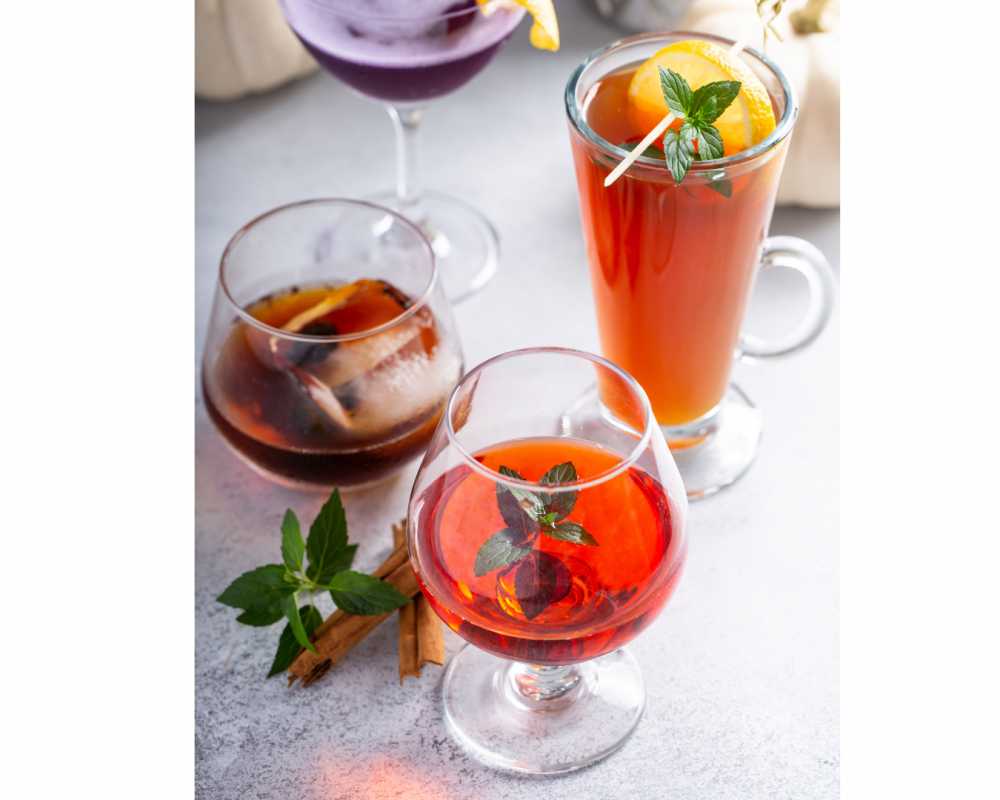I like a fun sipper when I’m out to dinner or after work, but I don’t always want it to be boozy—a shared feeling I’m noticing more and more among my peers and on the internet. But upon arriving at the mocktail section of the menu, I’m often disappointed to find little more than variations of seltzer with a splash of cranberry juice.
It isn’t a huge surprise that mocktails are often treated as the consolation prizes of the beverage world. A “mocktail” hints at a deficit—a cocktail that lacks the main event, booze. (Case in point: the "Phony Negroni.") But if you ask me, a delicious, balanced beverage that’s zero-proof or low-ABV (lower alcohol by volume) deserves its flowers in its own right. And a better name.
And while more restaurants and bars are offering thoughtful spirit-free beverages, a sophisticated version at home isn’t out of the question. You can certainly use other recipes as a blueprint, but it’s also fun to experiment with your own riffs on recipes while borrowing some of the techniques that make a cocktail good.
When crafting a mocktail, here’s what to think about:
Consider your favorite flavors.
Do you only like bitter, liquor-forward cocktails, like a Negroni, or tart juices? Chances are you may not love a super sugary mocktail. If you’re after a kick, try incorporating warming spices, fresh ginger or maybe even jalapeño; if you like sunny acidity, try pomegranate or citrus.
Put down the sugar—and build flavor instead.
A great cocktail is a balanced cocktail—which is why mocktails that are total sugar bombs, like the virgin piña colada, may understandably get a bad rap. The tannic bite or botanical notes of certain alcohols don’t need to be mimicked exactly for a mocktail, but they’re good cues for building complex flavor. As a rule of thumb, a hit of bitter or sour goes a long way. I often use kombucha, strong tea (black, green, white or herbal), tonic water, grapefruit juice, flavored seltzer or ginger beer as a base.
Then, adding a sweetener won’t overpower the drink, but rather will offset the vinegary, sour, spicy or sharp base flavors you’ve started with. Use anything you like: homemade simple syrup (equal parts sugar and water, simmered until the sugar dissolves), infused with spices or herbs; fruit cordials; honey; store-bought syrups or shrubs. During the fall, I keep a jar of fig and brown sugar syrup in the fridge.
I like to finish with something that lightens things up, usually a fresh ingredient like muddled fruit, mint, citrus juice or even yogurt. On a recent vacation, I blitzed up ice, fresh rambutan, coconut water, lime juice and strong white tea. The result was fruity, light, not-too-sweet and endlessly sippable.
And don’t fear the egg white. Egg whites are used in cocktails to add body and aerate ingredients—I use editorial director J.M. Hirsch’s tip; use pasteurized liquid egg whites for peace of mind.
Give nonalcoholic spirits a shot.
The distilled nonalcoholic spirit industry has exploded in recent years. Some options are really fantastic—I like Pentire Adrift 70 as a gin stand-in and have also enjoyed Seedlip, Ghia, Lyre’s and Wilfred’s. Nonalcoholic bitters are also available if you want to try them.
Some of these options are often as expensive as a bottle of alcohol, so perhaps not the route if you’re looking to give your wallet a break.
Shake, don’t stir.
When it comes to a mocktail, I have better luck with shaking my ingredients together rather than stirring—I leave the stirring for silky, spirit-forward cocktails. I pop all of my non-fizzy ingredients into a shaker full of ice and shake for about 10 seconds before pouring to help thoroughly incorporate my ingredients.
Present with flair.
You worked hard on this! Add a final pop of flavor with a salt, sugar or tajín rim (extra delicious with pulverized freeze-dried citrus or fruit). Or, garnish with a citrus twist, cherry or even a paper umbrella. Your mocktail deserves it.
There are no rules!
Experiment! Play with combinations. Start with a couple things and add as you go. Or, dip your toe in and start with a tried-and-tested mocktail recipe from a source you trust, like this one from J.M. Hirsch.
And if you're looking for more Milk Street, check out our livestream cooking classes with our favorite chefs, home cooks and friends for global recipes, cooking methods and more.




